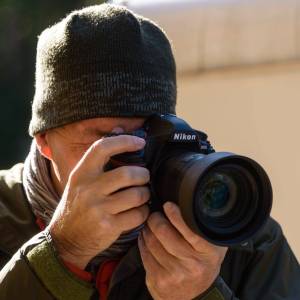Comet Neowise (C2020/F3)
I've been hoping to be able to photograph this comet for some weeks. There are some brilliant images here on Blipfoto from other members and I've been exceedingly frustrated by the cloud cover over the last week or so. Reading other commentators on the night sky I was aware that the comet and its trail were getting less bright each day and I was worried I might miss this rare celestial phenomenon.
We'd had a lovely barbecue with family and I was watching the skies, happily seeing some late high cloud melt away as sunset arrived. I'd decided to head to the local reservoir, on the southern shore, so I had a good view across to the northern horizon. On arriving about half an hour after sunset it was still in the post sunset glow. my first location choice had to be abandoned as a large number of cars were parked in the area, from my observations a lot of young people had met. I really didn't want to chance any issues and be disturbed by curious people. Luckily I knew another location where I could get to the side of the reservoir.
I set up the tripod and camera and started scanning the skies using a couple of apps, Stellarium and Star Walk, to identify the location if the comet. The sky was still bright (in night time terms) and my naked eye was struggling to pick up many starts to the north west. I knew it would be about half way between the Great Bear (Ursa Major) constellation and the horizon. I was surprised how high I was looking in the sky, considering the images I'd seen. I had read that it was getting higher in the sky each night.
Where I live there is a lot of light pollution and local buildings, including the Chasewater Light Railway Station had lighting still on. It makes viewing the night sky more difficult and I must be honest I couldn't see the comet, despite knowing it was in front of me. All hail the modern camera sensor, with my eye glued to the eyepiece I finally found the comet just where the apps suggested. Yes!
I swapped between the 200-500mm lens and the 50mm and 20 mm f1.8 lens to record the scene. The main shot is with the long lens, at 500mm it required a 2 second exposure (f/5.6) at iso6400. The stars are just about acceptable, though I can see a slight blur as they track across the sky. The extra was with the 20mm lens (3 secs @f/1.8 at iso400). It gives reference to the size of the comet in the scene.
I'm pretty chuffed to have seen the comet, even if it was only through the technology of a modern camera sensor. Even as I left I could only just discern a dot in the sky where the comet was located and was unable to see its tail with the naked eye (and I am lucky to still have very good eyesight).
If you are thinking of trying to look for the comet I'd do it as soon as possible. It seems to be getting fainter each day. It is pretty much north west of us at the moment. If you can find Ursa Major in the sky. Draw a line from the right most star (Dubhe), down to the horizon and the comet is slightly to the right and about half way between the star and the horizon.
Day Miles: 5.6 miles. Total Miles: 902.2 miles


Comments
Sign in or get an account to comment.


